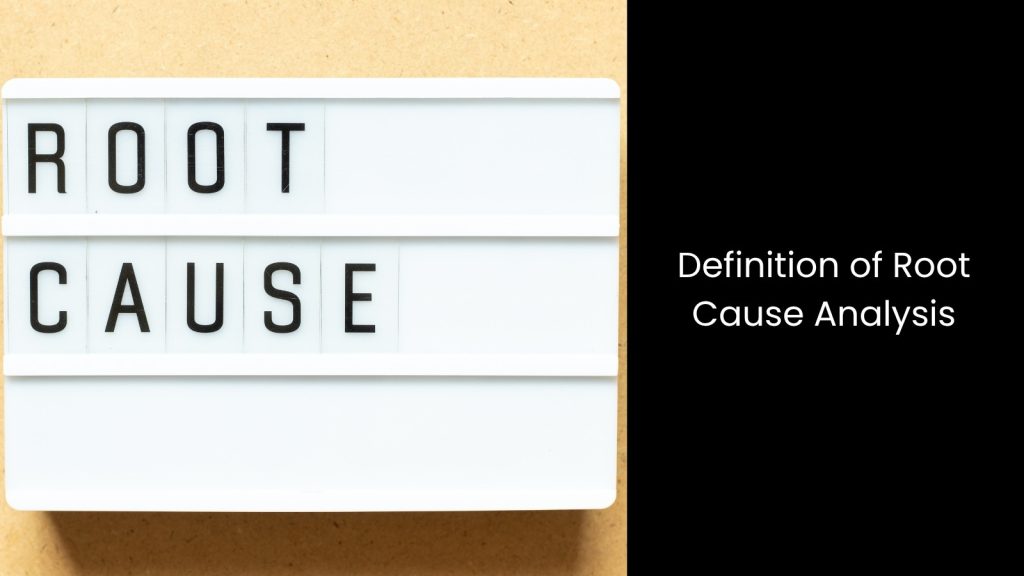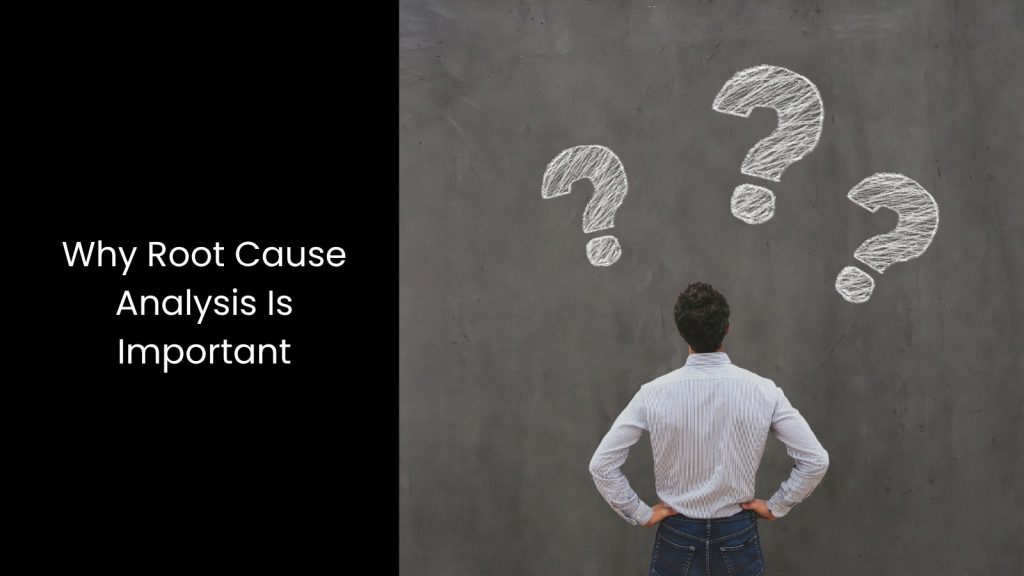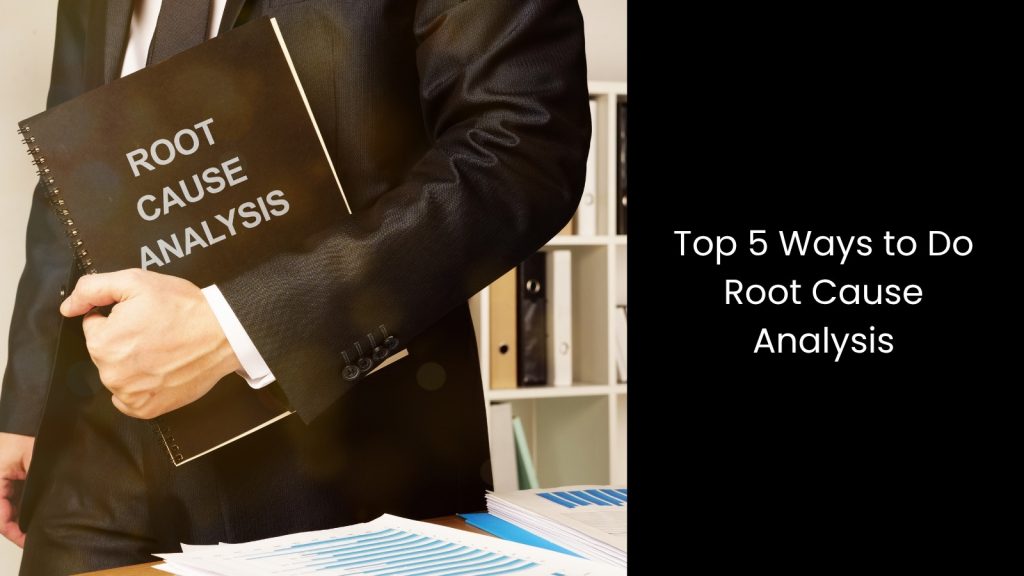When things go wrong, quick fixes only work for so long. This is where ‘Root Cause Analysis’ offers a smarter path. It helps find the real issue behind recurring problems. No matter what industry you belong to, you need to understand what RCA is, how it works, and why it matters in fields like business, healthcare, engineering, and IT. If you want fewer breakdowns and better results, learning how to apply root cause analysis can change the way your team thinks, works, and solves challenges.
This article covers everything from its definition to applications.
We will discover
- Definition of Root Cause Analysis
- Why Root Cause Analysis Is Important
- Top 5 Ways to Do Root Cause Analysis
- Fault Tree Analysis (FTA)
- Failure Mode and Effects Analysis (FMEA)
- Process Mapping
- 5 Whys Analysis
- Fishbone Diagram (Ishikawa Diagram)
4. Having a Robust Root Cause Analysis Framework with Data Analytics
Definition of Root Cause Analysis

- Root cause analysis is simply digging deep to find out what caused a problem instead of just fixing what is on the surface.
- People usually treat the symptoms, like slow machines or missed deadlines, without asking what started the issue in the first place. Symptoms show something is wrong, but the root cause explains why it went wrong.
- This is where RCA helps people follow a clear step-by-step way to look past the obvious and figure out the real reason behind the issue.
- Instead of guessing, it guides teams to use facts, ask questions, and understand the full story before jumping to any fix.
Why Root Cause Analysis Is Important

- Root cause analysis matters because it helps people stop problems from coming back again and again. When teams fix issues at the source, they avoid wasting time on quick fixes that do not last.
- This approach keeps machines running longer, improves safety for everyone involved, and leads to smarter, long-term solutions. Instead of putting out fires every day, workers can focus on doing their jobs better.
- RCA also cuts down delays and costly repairs, which saves both time and money. People work more confidently when they understand what went wrong and how to stop it from happening again.
- That is why finding the real cause makes such a big difference in the long run.
Top 5 Ways to Do Root Cause Analysis

Fault Tree Analysis (FTA)
Each branch represents a small event or condition that helped the main issue happen. People use logic gates like ‘and’ or ‘OR’ to show how different problems link together. For example, a machine stops working only when both the power fails and the backup battery dies. This method makes people think deeper, connect events, and see the whole picture, not just one small part.
People usually use FTA in situations where safety matters, systems feel complicated, or mistakes cost a lot. Instead of blaming one thing or one person, they break down each step, track patterns, and find weak spots in the process.
Failure Mode and Effects Analysis (FMEA)
Then they look at what could go wrong, how bad that failure might be, how likely it is to happen, and whether anyone would notice it in time. They use numbers to rank each part, and then they multiply those scores to get what is called a Risk Priority Number, or RPN.
Higher numbers mean more attention is needed. This method works best when designing new machines, making updates, or fixing recurring problems in factories, hospitals, or aeroplanes.
Everyone focuses on prevention, not just reaction. They think about what could break, where it could lead, and how to stop it before things go sideways. So, FMEA keeps people alert, helps plan ahead, and makes sure no one overlooks the small stuff that causes big problems.
Process Mapping
It is like creating a road map of your daily route and marking where traffic jams always happen. People use shapes like ovals, rectangles, and arrows to lay out the process in order. Each box shows who does what, when they do it, and how tasks connect.
Then everyone steps back and looks for missing steps, delays, or mix-ups that slow things down or cause errors. It feels simple, but it reveals a lot. People often find surprises they did not expect, like duplicate work, unclear instructions, or tools used the wrong way.
When teams follow this method, they stop guessing and start seeing.
5 Whys Analysis
The goal is to keep asking until the group hits the real reason behind the issue. In the industrial world, operators use this when they need fast answers without fancy tools. It works well in meetings, daily check-ins, or quick problem-solving sessions. What makes it strong is that it helps people think deeper without turning the process into a headache.
Plus, it forces them to move past blaming and look at what broke down. In the outer world, this is advisable for kids even to use when they want to understand something confusing. In work environments, the ‘5 Whys’ help cut out wasted time and make room for real, lasting fixes that do not fall apart the next day.
Fishbone Diagram (Ishikawa Diagram)
At the head of the fish, people write down the main issue, like a missed delivery or a faulty product. Then, along the ‘bones’, they list possible cause categories such as people, process, materials, equipment, environment, and methods. Inside each of those, they fill in smaller reasons that might have led to the problem.
This visual layout helps everyone see how different factors come together to create one bad result. Instead of jumping to conclusions, teams explore every angle in a structured way. They often use this in factories, schools, hospitals, or anywhere steps matter.
It also works great when a team needs to solve a problem together without pointing fingers. Everyone adds their ideas to the diagram, so the group ends up with a full picture instead of just pieces. The fishbone diagram also builds teamwork and shows patterns that people might not catch with words alone.
Having a Robust Root Cause Analysis Framework with Data Analytics

As you can see, ‘Root Cause Analysis’ helps teams find and fix the real reasons behind recurring problems. When you combine it with data analytics, you uncover deeper patterns that guide better decisions. This approach not only boosts day-to-day performance but also builds lasting improvements. If you want to find the real reasons for your failures, start applying tools that have RCA capabilities today.







